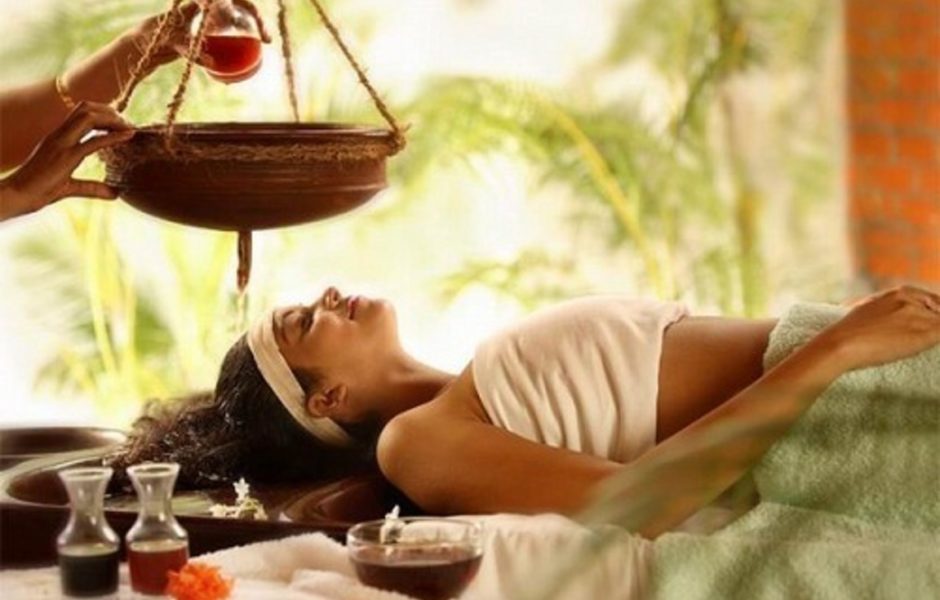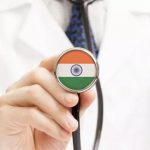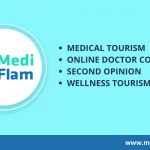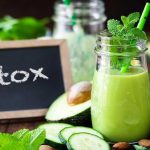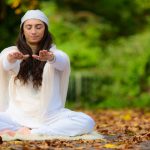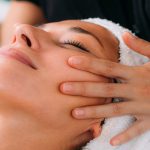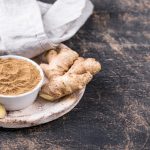Ayurveda is an ancient science that originated in India thousands of years ago and is practiced still today. It was a by-product of the elements of Indian culture and its quality of absorptive cohesiveness. Ayurveda has not been a part of mainstream Indian culture as has been believed and proposed by many authors and promoters of Ayurveda. The distinct element of Indian culture has been its flexibility to integrate diverse cultural elements and Ayurveda is a complex product of this trait resulting out of assimilation of different cultural strands and medical insights. In its initial evolution, Ayurveda faced the tension between the competition of superiority of ritual practices versus the scientific use of herbs. What is practiced today is a result of the development of a paradoxically conservative yet progressive culture. The practice of Modern Ayurveda is also a culmination of scientific research and experience of nature giving a scientific discipline of medicine that is steeped in religious tradition as well as natural medicine based both on tradition and experience. It is a complete medical system that deals with health in all its aspects including physical, mental, and spiritual well-being, while giving utmost importance to diet, lifestyle habits, and treating and managing specific diseases. Panchkarma treatment forms an important part of the detoxification regimen of Ayurvedic practice. It leads to the complete detoxification of the body and is now a major inclusion in the therapies provided in multiple wellness centers in India.
WHAT IS PANCHKARMA TREATMENT?
Ayurveda believes that diseases occur in the body because of the accumulation of toxins. Thus, Panchkarma treatment holds an important position in Ayurveda as it leads to complete detoxification of the body. It is not only suggested for sick patients but also for healthy people to keep them charged. So, what is Panchkarma exactly? As the name suggests, Panchkarma contains five major procedures that lead to detoxification. It involves two main components of treatment, oleation, and fomentation. Oleation refers to lubrication and includes the use of oils or oily substances, both internally and externally. Usually, medicated ghee is used for internal use. Oleation treatment is followed by fomentation treatment which leads to sweating. The treatment is performed over several days. The human body has an elegant system of removing wastes from the body through multiple channels like sweat glands, blood vessels, urinary tract, and intestines. Panchkarma helps to clear out these channels so that everything runs smoothly and efficiently. Panchkarma treatment costs vary from one wellness resort to another but usually are in the range of around $1200 for a twin-sharing room for 14 days program.
THERAPIES INCLUDED IN PANCHKARMA TREATMENT
- Poorva karma which is the preparation phase,
- Pradhana karma is the phase of the principal procedure, and
- Paschat karma which is the post-therapy procedure phase
The preparation phase is designed to prepare the body for the elimination of imbalances through detoxification. The steps that are a part of this phase are designed in a way to release stored toxicity. Internal and external oleation referred to as Snehana forms the main part of this phase. The patient is instructed to ingest herbalized oils that lubricate the digestive system.
Once the body has been prepared, the principal procedure phase is started. This phase consists of different procedures that include:
- Nasyam refers to the cleansing of five sense organs and the nervous system through the nostrils. Nasyam Ayurveda therapy refers to the installation of medicated oil or ghee through the nasal passage and consists of different types that include
- Virechana Nasyam includes the introduction of strong medicines that help to expel toxins from the head region.
- Bimhana Nasyam is the choice for the treatment of vata diseases like migraine, voice loss, mouth diseases, difficulty in opening eyes and lifting hands. Medicated ghee is used as medicine.
- Samana Nasyam is performed to calm the dosha rather than expelling it. It is neither too strong nor too mild and is usually employed for conditions like skin discoloration, hair loss, and eye diseases. Usually, medicated water and milk are used for this purpose.
The benefits of Nasyam include many potential mental health benefits.
- Nasyam: refers to the cleansing of five sense organs and the nervous system through the nostrils. Nasyam Ayurveda therapy refers to the installation of medicated oil or ghee through the nasal passage and consists of different types that include
- Virechana Nasyam: includes the introduction of strong medicines that help to expel toxins from the head region.
- Bimhana Nasyam: is the choice for the treatment of vata diseases like migraine, voice loss, mouth diseases, difficulty in opening eyes and lifting hands. Medicated ghee is used as medicine.
- Samana Nasyam: is performed to calm the dosha rather than expelling it. It is neither too strong nor too mild and is usually employed for conditions like skin discoloration, hair loss, and eye diseases. Usually, medicated water and milk are used for this purpose.
After the principal procedure phase, the post-therapy procedure phase is initiated which is considered the rejuvenation phase. This is the time that is used to implement the tools that have been taught so that the new you can be sustained and further improved. By stoking the Agni, Ayurveda tries to avoid unhealthy accumulation. This can be accomplished through the regular practice of yoga, meditation, a dosha-specific diet, abhyanga, and pranayama.
WHERE SHOULD YOU TAKE PANCHKARMA TREATMENT?
India is the birthplace of the ancient practice of medicine, Ayurveda and Yoga, the practice that harmonizes the body, mind, and soul. By combining these two practices in the right way, optimum health benefits can be achieved and one can lead a disease-free content life. Best Panchkarma treatment centers in India are located throughout the length and breadth of the country. Some of the most famous include:
ANANDA IN THE HIMALAYAS, RISHIKESH
Considered as one of the best Wellness centers in India, Ananda in the Himalayas, Rishikesh, caters to the varied needs of the people visiting here. They have a range of offerings and include as varied as post-COVID rejuvenation packages to Panchkarma treatment, holistic detox and rejuvenation, and immunity booster programs. This is a perfect idyllic location overseeing the Ganges and provides a holistic approach to the problems that include approaches like Yoga and meditation. They offer introductory and comprehensive programs and are considered one of the best Panchkarma Treatment Centers in India.
SOMATHEERAM AYURVEDA VILLAGE, KERALA
Somatheeram is the first of its kind Ayurveda village located at a prime location in the Southern Indian state of Kerala. It provides a host of facilities that cater to most of the health and beauty needs. Their focus is to treat problems in the Ayurveda way and have programs for pain management, stress management, and other problems. This is also considered one of the best Panchkarma treatment centers in India.
CARNOUSTIE AYURVEDA AND WELLNESS RESORT, KERALA
Featured in the Forbes top 5 Wellness Retreats for Ultimate Renewal, 2017, Carnoustie Ayurveda and Wellness Resort in Kerala is one of the top names when wellness centers are considered. It offers a variety of programs that cater to various needs of individuals. They have dedicated programs for weight loss, diabetes, pain management, detoxification through Panchkarma, anti-aging, rejuvenation, women’s health care, and sports medicine. It is considered one of the best Panchkarma Treatment Centers in India.
ATMANTAN, PUNE
Located in a scenic place near Pune, Atmantan Wellness Resort offers a variety of programs that help an individual to achieve the best of his/her body. Numerous programs help in weight loss management, detoxification through Panchkarma treatment, immunity enhancement program, natural healing for disease management, and holistic health approach which also includes emotional healing. It is ranked among the best Panchkarma treatment centers in India.
KALARI KOVILAKOM, KERALA
Kalari Kovilakom, located in the southern state of Kerala, is a part of the CGHEarth Ayurveda group and is considered one of the best Ayurveda treatment and wellness centers in India. It offers a host of facilities that adopt a holistic approach to treating various diseases. They follow the elimination process of Ayurveda called Shodana. It is a NABH certified center and thus is a testimony to the kind of high standards it adheres to. They have almost all programs that cater to different problems of the human body. Considered as one of the Panchkarma Treatment Centers in India, it is one of the most sought-after wellness destinations in the country.
BENEFITS OF PANCHKARMA TREATMENTS
The definition of health according to Ayurveda is the existence of complete harmony of the physical and the mental state that encompasses emotional well-being too. According to it, a stressful and toxic environment leads to the accumulation of toxins causing body systems to deteriorate and thus leading to the development of chronic, degenerative, and non-specific diseases. These can then evolve into specific diseases that are detrimental to the health and wellness of an individual. Panchkarma, as described earlier, is a detoxification process that purifies the body and the mind. It also boosts an individual’s immunity which ultimately restores well-being. It is not one solution that fits all kinds of strategy but is tailored specifically to the individual needs of the patients. This depends on their Ayurvedic constitution type termed Prakruty, imbalances present in the individual, if any, age, immune status, digestive fire, comorbidities, and others. Depending on the needs of the individual, all 5 processes or only a few processes of Panchkarma are adopted. Panchkarma is usually a comfortable process but can lead to some discomfort due to the powerful release of toxins. This phase is referred to as the healing crisis. The benefits of Panchkarma are numerous and lead to multiple health benefits. The treatment benefits of Panchkarma include:
- Complete purification of the body
- Total toxin removal
- Weight reduction
- Enhancement of the strength of digestive fire
- Opening of blocked channels of excretion
- Mind and body relaxation
- Tissue rejuvenation
- Immunity boosting
- Stress relief
The above listed are some of the main benefits of Panchkarma. Other benefits that have been experienced by people are:
- Relief in slipped disc problems
- Increase in the success rate of Artificial Reproductive Technique
- Reduction in the inflammation and easing of symptoms in psoriasis
- Relief in PCOS (Polycystic Ovarian Syndrome)
- Promotion of sleep and relief in the problem of insomnia
- Reduction in acne and pimples
- Relief in osteoarthritis
- Relief in sciatica and reduction of low back pain
- Reduction in obesity
FAQs REGARDING PANCHKARMA TREATMENT
1. What do they do in Panchkarma treatment?
Panchkarma treatment refers to the complete detoxification of the body through the Ayurvedic way. It consists of the preparatory phase, principal treatment phase, and post-treatment phase. Since Panchkarma involves the removal of toxins, the preparatory phase prepares the body for this. The principal phase includes:
- Nasyam refers to the cleansing of five sense organs and the nervous system through the nostrils. Nasyam Ayurveda therapy refers to the installation of medicated oil or ghee through the nasal passage and consists of different types that include
- Virechana Nasyam includes the introduction of strong medicines that help to expel toxins from the head region.
- Bimhana Nasyam is the choice for the treatment of vata diseases like migraine, voice loss, mouth diseases, difficulty in opening eyes, and lifting hands. Medicated ghee is used as medicine.
- Samana Nasyam is performed to calm the dosha rather than expelling it. It is neither too strong nor too mild and is usually employed for conditions like skin discoloration, hair loss, and eye diseases. Usually, medicated water and milk are used for this purpose.
The benefits of Nasyam include many potential mental health benefits.
- Vamana refers to the cleansing of the digestive system through medically induced vomiting. Vamana in Ayurveda practice holds a very important position and the treatment benefits are seen in patients with aggravated Kapha-dosha. It leads to the dislodging of the toxins principally from the respiratory and gastrointestinal tracts.
- Virechana refers to the cleansing of the intestines through medically induced purgation. Virechanam in Ayurveda holds an important place and is beneficial to patients who have an aggravated pitta-dosha. Virechana Ayurveda therapy helps to remove toxic waste from the liver, gallbladder, and intestinal tract.
- Basti or vasti refers to the cleansing of the colon by the use of ayurvedic herbal oils or decoctions as an enema. Sneha Vasti refers to the use of medicated oil enema whereas Kashaya Vasti refers to the use of medicated decoction enema. The benefits of Vasti are usually seen in diseases caused by aggravated vata-dosha. Kashaya Vasti’s benefits are seen in health conditions like pain management, detoxification, gastric problems, and paralysis.
- Rakta mochana refers to the cleansing of blood through the use of leeches in a controlled setting
After the principal procedure phase, the post-therapy procedure phase is initiated which is considered the rejuvenation phase. This is the time that is used to implement the tools that have been taught so that the new you can be sustained and further improved. By stoking the Agni, Ayurveda tries to avoid unhealthy accumulation. This can be accomplished through the regular practice of yoga, meditation, a dosha-specific diet, abhyanga, and pranayama.
2. How much does Panchkarma treatment cost?
Panchkarma treatment costs vary from person to person according to the Ayurvedic composition of the individual and the existence of other conditions. It may vary from Rs. 1200 to Rs. 1500 per day and around Rs. 20000 to Rs. 30000 for a month. However, the high-end resorts have a premium price and charges may start from around $1200 for a 14-day program in a twin-sharing room.
3. How long does Panchkarma treatment take?
Panchkarma treatment comprises the preparatory, principal, and post-therapy phases. The whole process may take around 14 to 21 days or even more. The whole plan of therapy depends on the individual.
4. Can Panchkarma cure PCOS?
Panchkarma has shown immense benefits to women suffering from PCOS (polycystic ovarian syndrome). This disease has become very common in the modern world because of increased amounts of stress and irregular and sedentary lifestyles. As this disease is a complex hormonal disease, which is accompanied by allergies, recurrent infections, and most commonly obesity, women suffering from them experience extreme discomfort and suffer a painful life. Panchkarma treatment helps to restore normal hormonal balance while also boosting the immune response. It leads to complete detoxification and hence provides immense relief to women with PCOS.
5. What are the benefits of Panchkarma?
The treatment benefits of Panchkarma include:
- Complete purification of the body
- Total toxin removal
- Weight reduction
- Enhancing the strength of digestive fire
- Opening of blocked channels of excretion
- Mind and body relaxation
- Tissue rejuvenation
- Immunity boosting
- Stress relief
The above listed are some of the main benefits of Panchkarma. Other benefits that have been experienced by people are:
- Relief in slipped disc problems
- Increases the success rate of Artificial Reproductive Technique
- Reduction in the inflammation and easing of symptoms in psoriasis
- Relief in PCOS (Polycystic Ovarian Syndrome)
- Promotes sleep and heals the problem of insomnia
- Reduction in acne and pimples
- Relief in osteoarthritis
- Relief in sciatica and reduction of low back pain
- Reduction in obesity

